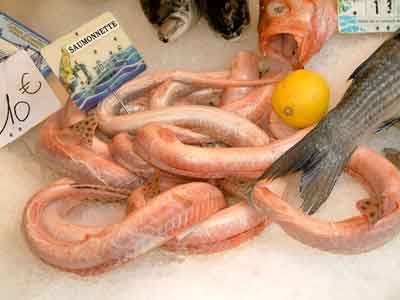Long coriander. Stinkweed. A herb widely used in seasoning and marinating in the Caribbean. It is also used extensively in Thailand, India, Vietnam, and other parts of Asia as a culinary herb. This variety of coriander dries well, retaining good color and flavor, making it valuable in the dried herb industry. It is sometimes used as a substitute for cilantro, but it has a much stronger taste.
A variety of red eating apple with yellowish-white flesh which is firm and sweet, slightly acid and a little rich. It was discovered by Mr Charles L Roberts in a garden in Napier in 1948 and introduced commercially by Stark Bros of Missouri in 1967. This late-season variety is harvested from mid-October in South-East England and is at is best from January to March.
Hulled, split black gram lentils are a creamy white, which is why they are sometimes called white gram.
When the sponge gourd or smooth gourd is old it becomes coarse and fibrous and is actually the loofah you use in the bath. However, it is eaten throughout Asia. It resembles a cucumber when it is young and needs to be salted to reduce the bitterness before use.
An unsweetened bread, made with yeast, beaten rather than kneaded. It is made from corn meal and eggs in a very thick batter baked in a casserole. From the southern states. More like a pudding than a bread.
A variety of croaker or drum fish. A deep-bodied seawater fish which can be cooked in many ways. Croakers or drums are so named because of the croaking and drumming which accompanies their mating.

Huss. This species of dogfish has a grey-brown skin with quite pronounced dark spots. Because of its relative similarity to a shark the coarse skin is usually removed by fishmongers. These fish grow to about 80 cm (32 inches) in length. The flesh is white or pinkish with a firm texture and good flavour. It is boneless. It is also commonly known as the spotted dogfish or nursehound or, in some places, as rock salmon or rock eel. Spurdog, smoothound and tope are all sold as huss. It is an excellent addition to soups because of its texture. It feeds on shellfish which flavours its own firm, white flesh.